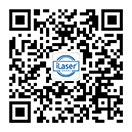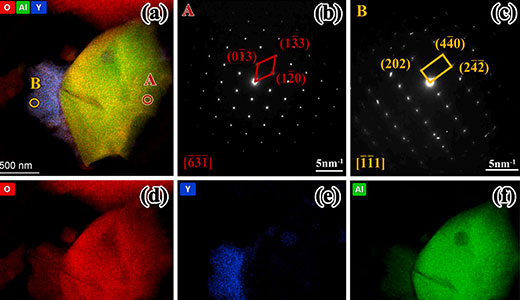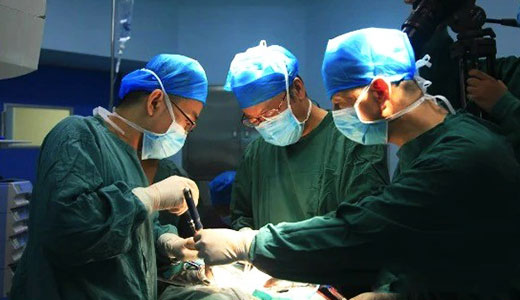Immunomodulation and osteogenic microenvironment play an important role in three-dimensional regeneration of bone tissue.Three-dimensional scaffolds with different chemical composition, macroporous structure and surface characteristics provide a favorable microenvironment for bone tissue regeneration.However, there is a gap between the ordered surface microstructure of bioceramic scaffolds and the immune microenvironment of bone regeneration.In this study, Wu Chengtie and others successfully prepared gear-inspired 3D scaffolds with good surface microstructure for immune regulation and bone regeneration through an improved extrusion-based 3D printing strategy.The prepared gear scaffold can induce the polarization of macrophages to M2 phenotype to alleviate inflammation, and further promote the osteogenic differentiation of bone marrow mesenchymal stem cells to form new bone.It plays a key role in immune regulation and osteogenic microenvironment in bone tissue engineering and regenerative medicine.Related research, "3D Printing of Gear — inspired Biomaterials: Immunomodulation and Bone Regeneration", "was published Sept. 12, 2022, in ActaBiomaterialia.

Three-dimensional scaffolds with different chemical composition, macroporous structure and surface characteristics provide a favorable microenvironment for bone tissue regeneration.However, there is a gap between the ordered surface microstructure of bioceramic scaffolds and the immune microenvironment of bone regeneration.In this study, Wu Chengtie and others successfully prepared gear-inspired 3D scaffolds with good surface microstructure for immune regulation and bone regeneration through an improved extrusion-based 3D printing strategy.The prepared gear scaffold can induce the polarization of macrophages to M2 phenotype to alleviate inflammation, and further promote the osteogenic differentiation of bone marrow mesenchymal stem cells to form new bone.It plays a key role in immune regulation and osteogenic microenvironment in bone tissue engineering and regenerative medicine.Related research, "3D Printing of Gear — inspired Biomaterials: Immunomodulation and Bone Regeneration", "was published Sept. 12, 2022, in ActaBiomaterialia.
1. Design and preparation of different gear-like structures
In order to construct the gear-inspired microstructure on the bioceramic scaffold, a nozzle device using an improved extrusion-based 3D printing technology is used. Fig. 1 is a schematic and physical view of the gear-like scaffold and its manufacturing equipment.

Fig. 1 Configuration of modified nozzle and gear type support
2. Three-dimensional printing and characterization of bioceramic scaffold based on gear structure
To explore the biological function of the surface microstructure of the gear-like bioceramic scaffold, two different series of gear bioceramic scaffolds with different structural variables (different groove widths or depths) were prepared (Fig. 2A).A plain scaffold (smooth) without any gear microstructure was used as a control material (fig. 2A).To further validate the universality of this modified 3D printing technique, scaffolds with different microstructures (Fig. 2B), different raw materials (Fig. 2C), and inner groove structures (Fig. 2D) were successfully fabricated.In this study, β-tricalcium phosphate (β-TCP) was used as the main matrix material because of its good biocompatibility, osteogenic properties and wide clinical application prospects.

Figure 2. Various gear-inspired stent configurations.
3. in vitro biological evaluation of gear-inspired stent
It has been demonstrated that microscale morphology has an impact on the behavior and fate of cells.Here, the immunomodulatory activity of different gear-like bioceramic scaffolds on RAW267.4 cells and the osteogenic activity of these scaffolds on RBMSCs were investigated.The gear bioceramic scaffold showed different effects on RAW264.7 cells (Fig. 3A) and RBMSCs (Fig. 3B), respectively, as shown in the laser confocal scanning microscopy (CLSM) images.The results showed that the scaffold had the best extensibility and orientation effect on the above cells when the groove width of the disk-like component was 20 μm (G20).CCK-8 assay was used to detect the proliferation activity of the cells on the gear-inspired scaffolds.As shown in Fig. 3C and D, all scaffolds showed good biocompatibility and could significantly promote the proliferation of RAW264.7 cells, while the proliferation activity of RBMSCs was slightly lower than that of the control group.

Fig. 3 Morphology and proliferation of RAW264.7 cells and RBMSCs on different gear-like scaffolds
In order to investigate the immunomodulatory and osteogenic properties of gear bioceramic scaffolds, real-time polymerase chain reaction (RT-PCR) experiments were performed.RAW264.7 cells were loaded on bioceramic scaffolds with different gears and incubated for 2 days.As shown in Figure 4A and B, the expression of interleukin 18 (IL-18) was significantly down-regulated in the G20 group.The expression of inducible nitric oxide synthase (INOS) was down-regulated in the G20 group, and the expression of arginase-1 (Arg-1), an anti-inflammatory gene, was significantly up-regulated only in the G20 group.The expression of interleukin-1 receptor antagonist (IL-1ra) was significantly up-regulated in the G20 group.The above results show that G20 has the best anti-inflammatory effect and is stable.In order to further study the osteogenic properties of gear bioceramic scaffolds, RBMSCs were seeded on different scaffolds and cultured for 7 days.The expression of osteogenesis-related genes is shown in Fig. 4C and D.The expression of osteocalcin (OCN) gene in the G20 group was significantly higher than that in the control group, indicating a considerable osteogenic activity.
In addition to the single culture of RAW264.7 cells and RBMSCs, a co-culture system was established to explore the immunomodulatory effect of the gear bioceramic scaffold.The G20 stent was used as the experimental group, and the smooth stent was used as the control group.Smooth scaffolds or G20 scaffolds loaded with RAW 264.7 cells were placed in the Transwell chamber while RBMSCs were seeded on the plate as shown in Figure 4E.After 2 days of co-culture, the gene expression levels of RBMSCs OCN, osteopontin (OPN), Runt-related transcription factor 2 (RUNX2) and BMP-2 in the experimental group were significantly higher than those in the control group (Fig. 4 F), indicating that co-culture of RBMSCs on gear-like bioceramic scaffolds with RAW264.7 can effectively promote osteogenic differentiation.

Fig. 4 In vitro biological evaluation of the immunomodulatory and osteogenic properties of the cogwheel scaffold
4. in vivo biological evaluation of gear-inspired stent
In order to further study the anti-inflammatory and osteogenic properties of gear bioceramic scaffolds in vivo, a subcutaneous implantation model in mice and a femoral bone defect model in rabbits were established.Three groups, blank, smooth and G20, were selected for the study.As shown in fig. 5, there was almost no inflammatory reaction in the blank group.In addition, compared with the smooth group, the G20 group of gear-type bioceramic stents can promote the entry of connective tissue and blood vessels into the stent lumen.

Fig. 5 In vivo biological evaluation of the immunomodulatory properties of the gear scaffold
Based on the model of subcutaneous implantation in mice, the model of femoral defect in rabbits was established to study the osteogenic ability of bioceramic scaffolds excited by gears in vivo.Eight weeks after surgery, all rabbits were euthanized and samples were collected for further evaluation (fig. 6a).As shown in fig. 6B, there was more new bone (green) inside the G20 group scaffolds (red) than in the blank group.Micro-CT statistical analysis showed that the bone volume/total volume (BV/TV) value was significantly higher in the G20 group than in the blank and smooth groups (Fig. 6 C).

Fig. 6 In vivo biological evaluation of the osteogenic properties of the gear-like scaffold
In addition, Van-Gieson staining showed more new bone (red) in the G20 group than in the blank and smooth groups (Fig. 7).The quantitative analysis of new bone area in VG stained sections also showed that the osteogenic property of G20 group was better than that of the blank group and the smooth group.

Figure 7 Van-Gieson staining of new bone (red)
In summary, bioceramic scaffolds with different gear structures were successfully fabricated by the extrusion-based 3D printing strategy.3D printing strategies have demonstrated versatility and potential in many areas of tissue engineering and regenerative medicine.In addition, the gear-like bioceramic scaffolds showed good immunomodulatory and osteogenic activities in vitro and in vivo.This study presents a promising strategy to fabricate gear bioceramic scaffolds, integrating the immune and osteogenic microenvironments into a three-dimensional ordered microstructure, which is expected to be used for immune regulation and bone tissue engineering.(Source: Antarctic Bear)





